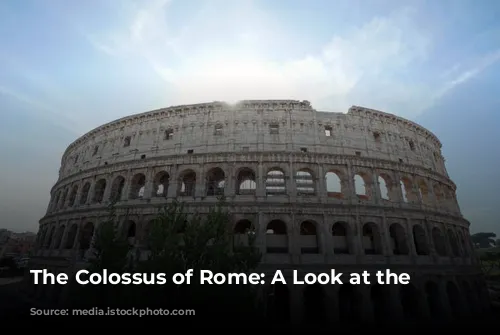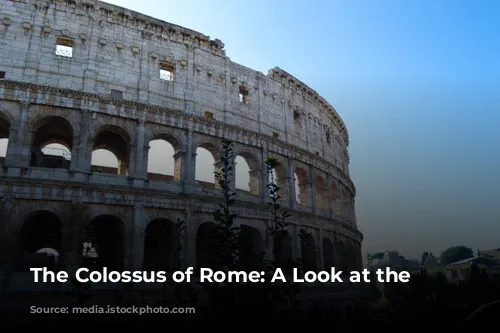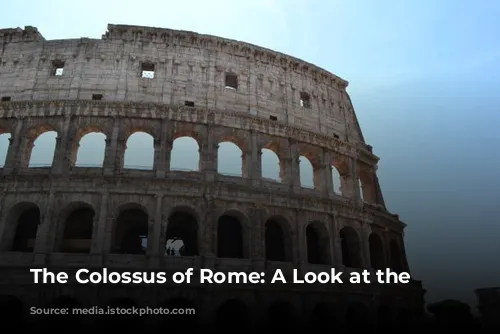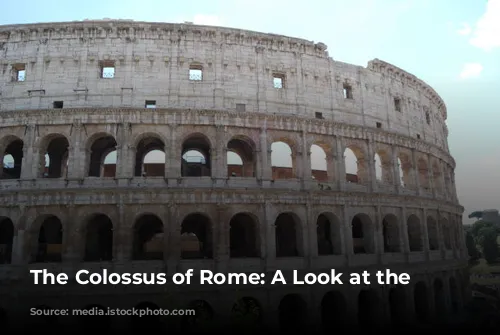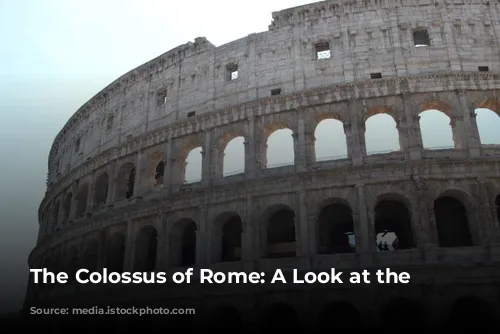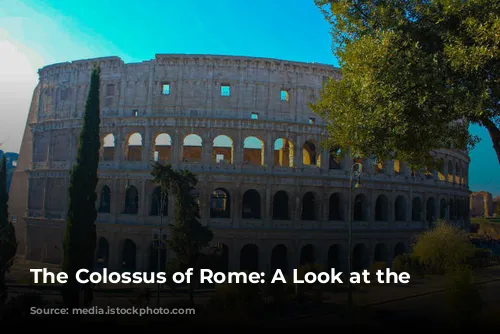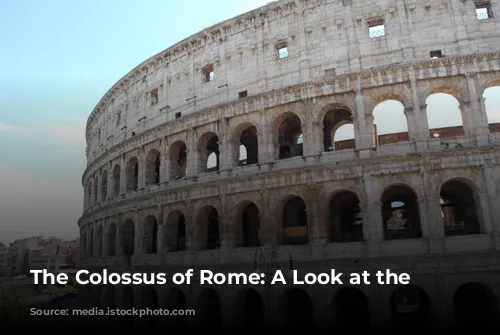The Colosseum, a name synonymous with ancient Rome, stands as a testament to the grandeur and might of the Roman Empire. Originally known as the Flavian Amphitheatre, this colossal structure, built by Emperor Vespasian, was inaugurated by his son Titus in 80 AD.
What makes the Colosseum so special? This iconic landmark, the largest amphitheatre in the Roman world, was constructed in a mere ten years, showcasing the Romans’ mastery of engineering.
A Spectacle of the Senses
The opening ceremony of the Colosseum was a grand spectacle that lasted for 100 days. It was a feast for the senses, featuring gladiatorial combats, wild animal hunts, and even naumachiae – real sea battles that brought the grandeur of the past to life. The Colosseum could accommodate up to 70,000 spectators, providing them with a breathtaking view of the arena.
Construction and Design
The Colosseum’s awe-inspiring design is a masterpiece of Roman engineering. The Romans were masters of the arch, using it as a fundamental element in their construction. The Colosseum, a testament to their skill, was built using a series of arches, stacked one upon the other, similar to a series of aqueducts.
The massive structure was initially adorned with travertine marble, giving it a dazzling white appearance. The Colosseum’s elliptical shape allowed for a larger seating capacity, accommodating spectators of all social classes. The four tiers were ingeniously designed with arches, the lower three boasting eighty arches each, adorned with grand statues.
A Glimpse into the Past
Today, we see only a skeletal version of the once-majestic arena. The Colosseum, ravaged by time and plundered for its valuable materials, stands as a poignant reminder of the passage of centuries. Over time, its marble, lead, and iron were used to construct buildings like the Barberini Palace, Piazza Venezia, and even St. Peter’s Basilica.
Life at the Colosseum: From Gladiators to Spectators
The Colosseum was more than just a structure; it was a vibrant hub of entertainment and spectacle. The arena floor, once a blend of brick and wood, has vanished, leaving behind the cellars where equipment for the shows was kept. The lifts and hoists, still visible today, were the special effects of their time, used to bring animals and gladiators into the arena with dramatic flair.
Admission to the Colosseum was free for Roman citizens, but seating arrangements reflected social hierarchies. The upper tiers were reserved for the common people, while those closer to the arena were for the elite, including senators, vestals, priests, and the emperor.
Gladiatorial Games: A Celebration of Skill and Courage
Gladiators, the stars of the Colosseum, were not always forced into combat. Often, they were prisoners of war given the choice of slavery or fighting in the arena, with the promise of freedom after a certain period. Others were driven by poverty, seeking fame and fortune.
These skilled warriors, trained to fight with a variety of weapons, provided spectators with a thrilling display of courage and skill. The retiarius, armed with a net, trident, and knife, fought against those wielding shield and sickle or heavy armor.
The Colosseum: A Symbol of Roman Culture
The Colosseum was a symbol of the Roman Empire’s power, showcasing the might and entertainment of the Roman people. The shows, both symbolic and practical, forged a bond between the citizens and their leaders, providing a welcome distraction from political anxieties. They were not just spectacles, but a reflection of Roman culture, values, and beliefs.
The Colosseum: A Legacy Enduring Through Time
The Colosseum, despite its ravaged state, continues to fascinate and captivate people from all walks of life. It stands as a reminder of a bygone era, a testament to the ingenuity and cultural vibrancy of the Roman Empire. The Colosseum is not just a ruin; it is a living museum, preserving echoes of a glorious past.
